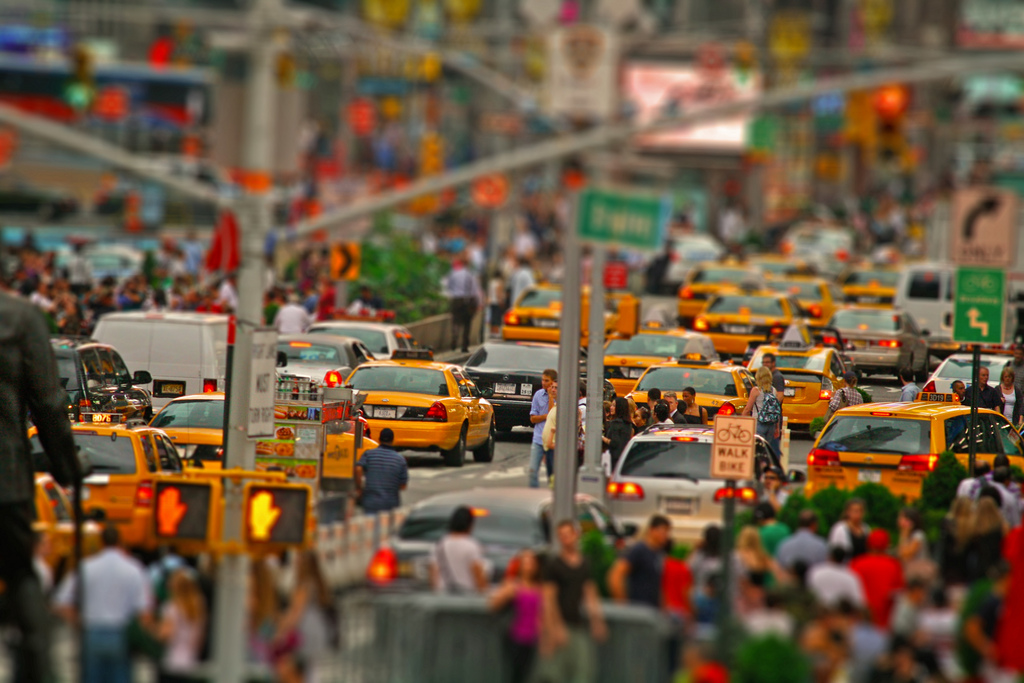
If you have ever been stuck in bumper-to-bumper traffic in New York City – and if you have ever been to New York City, you surely have – you probably noticed that a large percentage of the cars on the road are taxis. In fact, New York has over 13,000 cabs on its streets.
There are many places in the City where long lines of people wait for taxis for unpleasantly long periods of time. One has to wonder how many people at taxi stands in places like Penn Station are in fact headed to the same destination or at least places near one another.
Researchers at MIT recently did a study of a year’s worth of New York taxi data to answer just that sort of question. The analysis of 172 million taxi trips in 2011 revealed that the total amount of taxi travel time could have been reduced by 32% by having passengers share rides to the same locations or to locations no more than five minutes apart. Reducing taxi miles by that much would put a big dent in traffic and in pollution too. By sharing cabs, lines would be shorter, and with less traffic, trips would take less time.
So why don’t people share cabs? For the most part, just because they don’t want to or are uncomfortable with riding with strangers in a cab even though they do it on buses, airport shuttles, trains and planes all the time. Perhaps with growing online services like Bandwagon and Uber, people may someday reconsider. The benefits would be substantial.
**********
.
Web Links
Taxi-Sharing Boosts Energy Efficiency, But Will Riders Get on Board?
Photo, posted July 14, 2010, courtesy of Giacomo Carena via Flickr.
.
Earth Wise is a production of WAMC Northeast Public Radio.